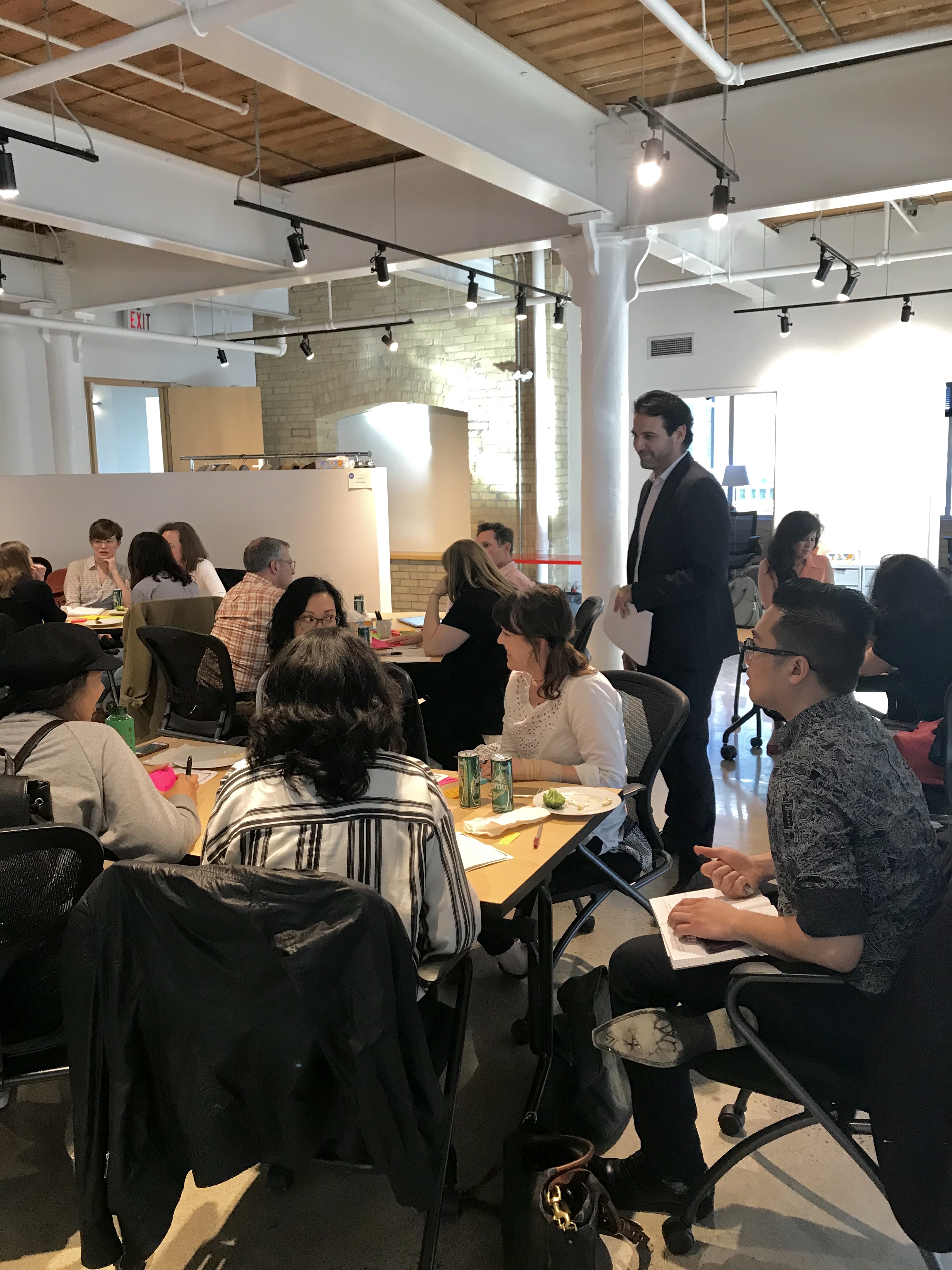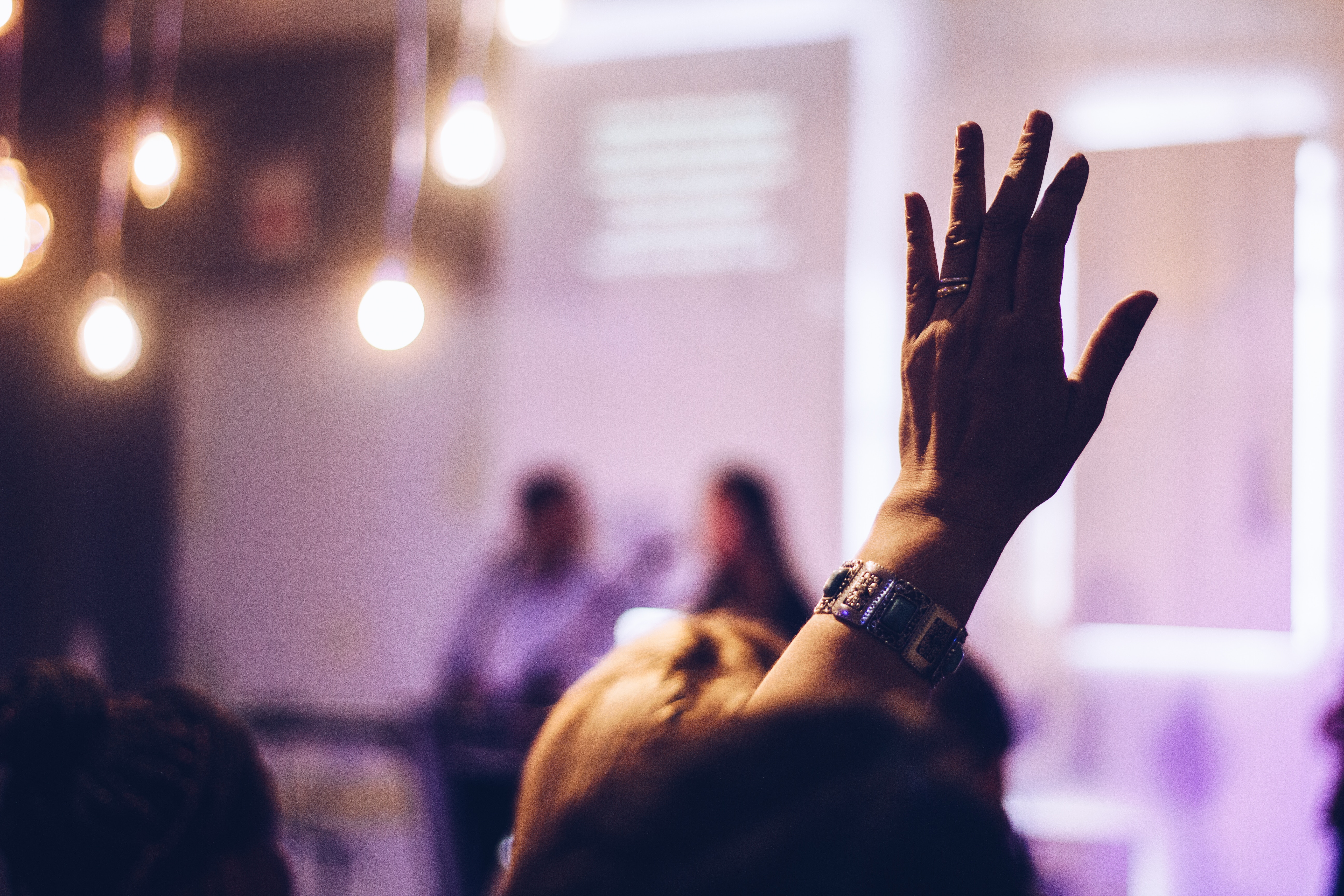Facilitation is a core skill for any innovation undertaking. A good facilitator listens, uncovers, and holds space for people. It’s why The Moment hosted a workshop specifically on facilitation skills in May 2019 featuring Yotam Weiner, an Australian facilitator who for more than two decades has been exploring techniques developed in the ancient classroom.
We sat down with Yotam to discuss how radically creative thinking exercises developed in the ancient world can be used, and how they can be especially applicable to today’s innovation practitioners.
What facilitation techniques are most valuable?
With thousands of different classroom techniques, Yotam tends to focus on a few things that come from the ancient world such as Zen Meditation and exercises that originated in the classrooms of ancient Babylonia, as well as teachings from the modern world.
And yet, no matter when the technique was developed, the foundation begins with understanding the mindset of the teacher who’s dedicated to a few different things. Most important are:
- Meeting the needs of the students,
- Helping students reflect, and
- Finding the right balance between challenge and support.
Meeting the needs of the person in front of you, facilitating reflection and finding the balance between challenging and supporting the people you’re working with are what translates really well to innovation.

Yotam Weiner facilitates an innovation session at The Moment, May 2019
How does facilitation empower innovation?
In many ways education hasn’t changed for thousands of years–it’s always been centred around forming honest, trusting relationships between teachers and students. Innovation follows a similar thread in that it’s also about the relationship between people, or amongst a learning community.
For thousands of years, the desire for a teacher or an expert to walk into a space and create some kind of a journey has remained in tact. The modern world however has taught us to be better at respecting the prior knowledge and prior experience of the people in our learning community.
So how can we best empower innovation through facilitation? Here are some ways.
Integration of education in innovation.
At its heart, there’s a very strong correlation between education and innovation. In both instances, we work with people to encounter a new idea or a new piece of knowledge, reflect on that idea or reflect on that piece of knowledge and then do something new with it. It might be something like bringing it into your own understanding of the world to learn the next point in a curriculum or to simply use that knowledge to innovate and create something new that adds value.
That basic process of two humans being in a relationship with each other, reflecting on ideas, and then applying those ideas to something else is common across both innovation and education.
Buying into the journey.
Like any mandate or exercise, you need people to come along for the journey. Beginning with a clear objective and ensuring that objective is communicated clearly before the work begins is a crucial step in the process. As you move forward, the activities you conduct need to be linked back to that objective. Ideally, that objective is co-written with the main sponsors or stakeholders in the business.
For example, if the objective is to grow the business by 10%, you need to make sure that everyone that’s coming to the session knows that’s why they’re there. And then the activity is focused directly on that objective; we’re going to meditate on growing by 10%. This provides a greater sense of focus during the exercise. It helps get buy-in and infuse belief in the process.
Allowing people to see the whole way through the journey is a crucial piece in deepening their focus in the moment and beyond.
From exercise to outcome.
Investing as much time as possible before a session to develop the objective helps bring everyone together. Invest time with key sponsors and stakeholders, learning their challenges and desires. Understanding the context is much more important than any pre-packaged model that you bring to the table. If you understand their context and have a really tight objective, you’re setting yourself up for success–and that’s only half the work.
The other half is implementation. You need to be comfortable to roll up your sleeves and get your hands dirty in operations implementations or on the ground processes. If this isn’t your skill and your strength, then it’s important that you partner up with someone who is strong at doing that detailed work in order to make sure that you get outcomes actually happening in the world.
It’s a worthy venture to learn how to make the space to get beyond superficial idea generation.
Empowering the hero’s journey.
One of the oldest frameworks are the literary archetypes established by ancient poets. The hero’s journey is one that remains highly relevant to the world today. You can see it in stories, films, and theatre. Thinking about that basic structure helps get people to focus on overcoming challenges and thinking about how different heroes overcome challenges. Focusing on different heroic approaches is a great jumping off point to solve a new problem.
This activity is great because it’s very quick to implement and yet it stays with us for a long time. When your team goes out into the world—watching movies with friends or reading books with their children—they will come across this model and it will spark ideas when they’re not thinking directly about the project.
Understanding history helps shape the future.
The classrooms of the ancient world provides many useful lessons for our innovation practices today. From developing clear objectives to centring ourselves in order to find clarity to learning patience in order to deepen our knowledge, the foundations of our modern innovation practices were built thousands of years ago. It’s a worthy venture to learn how to make the space to get beyond superficial idea generation. Looking back has never been more important in our journey into the future.
Get the Slides
We know not everyone can attend our workshops in person, but we believe that by empowering the innovation community with tools and practices together we can co-create a thriving human future. That’s why we’re making the slides from our workshop freely available. Click below to download the slides in Powerpoint (ppt) and let us know how you’re using these ancient practices in your facilitation skills to drive innovation forward.
______________________
Thank you to our interviewee, Yotam Weiner, for facilitating a workshop at The Moment and sharing knowledge on building facilitation skills for innovation using ancient wisdom.
Yotam is an Australian facilitator who, for almost two decades, has been exploring techniques developed in ancient classrooms. A recent migrant to Toronto, he has local experience building a new development model to promote innovation for Ontario physicians, facilitating reflection for Canada’s technology experts, facilitating process design for a major Canadian think tank, and facilitating reflection and planning for a Toronto community centre.


